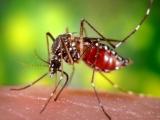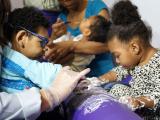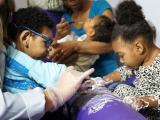The US Centers for Disease Control and Prevention (CDC) yesterday updated its maps of the range of Aedes mosquitoes that can spread Zika and other diseases, showing a wider area than before, as the number of Zika infections in the United States continue to climb—travel-linked ones on the mainland and locally acquired illnesses in the territories.
In other US developments, CDC officials and other experts will meet in Atlanta with state and local public health officials tomorrow for a Zika summit.
Maps show best estimates, but not disease risk
The new maps—the first update in over a decade—are the CDC's best estimates for Aedes aegypti and Aedes albopictus ranges, based on a variety of sources. The agency emphasized that the maps aren't intended to show exact locators or portray the risk for the spread of Zika virus.
A aegypti mosquito populations are fueling the spread of Zika virus in outbreak countries and are more likely to spread it and other diseases such as dengue and chikungunya than A albopictus, the CDC said.
For A aegypti, the new map shows an extension of the range beyond southern states and into parts of the Midwest and East Coast.
So far, Aedes mosquitos carrying Zika virus haven't been found in the continental United States. Health officials expect a few pockets of activity but have said the US impact will likely be limited because most people in the highest risk areas have air conditioning or are protected from mosquitoes by window screens.
US territory, travel-linked case counts
In its weekly update, the CDC said that as of yesterday, affected US territories have now reported 349 cases as well as 3 travel-linked ones. The numbers reflect an 11-case increase from last week. Most of the new cases are in Puerto Rico. Of the total, 37 Zika virus illnesses in pregnant women have been reported, plus one Guillain-Barre syndrome (GBS) case.
On the mainland, the number of travel-linked cases has climbed to 312, including 27 in pregnant women and 1 GBS case, the CDC said. Since last week, 39 more cases were reported, including 8 in pregnant women. States with the highest number of imported cases include Florida, New York, and Texas.
Tomorrow's Zika summit
The CDC tomorrow will host its 1-day Zika action plan (ZAP) summit, designed to help state and local officials prepare for and respond to cases, given that health officials say limited local spread of the virus is likely.
Participants will hear from experts, learn how to identify readiness gaps, and have access to the information and support they need to craft their own Zika actions plans.
The CDC will stream the summit live online.
See also:
CDC updated Aedes mosquito maps
CDC vector surveillance and control page
CDC Zika virus page
Mar 4 CDC statement on Apr 1 Zika summit
CDC Zika summit live stream information





















